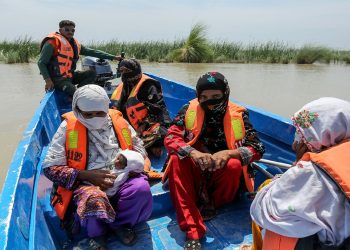WASHINGTON: The United States and 13 other countries expressed concerns that the World Health Organization (WHO) report on the origins of the novel coronavirus that causes COVID-19 was delayed and lacked access to complete data, according to a joint statement.
It followed WHO Director-General Tedros Adhanom Ghebreyesus’s assertion that data was withheld from its investigators who traveled to China to research the origins of the pandemic.
“It is equally essential that we voice our shared concerns that the international expert study on the source of the SARS-CoV-2 virus was significantly delayed and lacked access to complete, original data and samples,” said the joint statement released on the website of the US State Department
The statement was signed by the governments of Australia, Canada, Czech Republic, Denmark, Estonia, Israel, Japan, Latvia, Lithuania, Norway, the Republic of Korea, Slovenia, the United Kingdom, and the United States.
China refused to provide raw data on early COVID-19 cases to the WHO-led team, one of the team’s investigators has already said, potentially complicating efforts to understand how the global pandemic began.
The joint statement supported further studies of animals to find how the virus was introduced to humans, and called for a renewed commitment from WHO and member countries to access, transparency and timeliness.
The international expert mission to Wuhan has concluded it was very likely that COVID-19 first passed to humans from a bat through an intermediary animal but ruled out a laboratory leak.
READ MORE: COVID-19 jumped from bats through ‘missing link’ animal: WHO report
The intermediate host hypothesis was deemed “likely to very likely”, while the theory that the virus escaped from a lab was seen as “extremely unlikely”, according to the report.
Experts believe that the SARS-CoV-2 virus that causes the COVID-19 disease originally came from bats. One theory examined was that the virus jumped directly from bats to humans. The final report determined that this scenario was “possible to likely”.
A more likely scenario, the report found, was that the virus had first jumped from bats to another animal, which in turn infected humans.
The report meanwhile did not rule out transmission through frozen food since the virus appears to be able survive at freezing temperatures, saying that “introduction via cold food chain products is considered possible”.
Finally, the report examined the idea of a lab leak from, for instance, the Wuhan Institute of Virology — a theory promoted by former US president Donald Trump’s administration.
It pointed to the fact that there was no record of any virus resembling SARS-CoV-2 in any laboratory before December 2019, and stressed high safety levels at the labs in Wuhan. “A laboratory origin of the pandemic was considered to be extremely unlikely,” it said




































